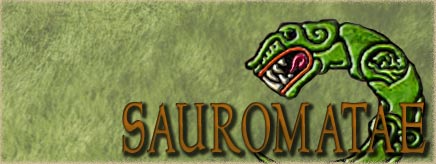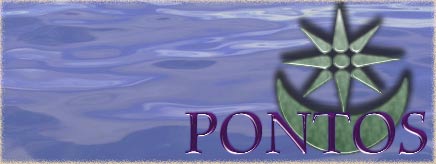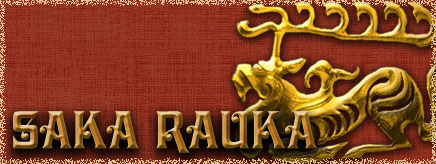
Originally Posted by
Ploutarchos "Sulla, 17-21"
From Lebadeia and the cave of Trophonius favourable utterances and oracles announcing victory were now sent out to the Romans. Of these the inhabitants of the country have more to say; but Sulla himself has written in the tenth book of his Memoirs, how Quintus Titius, a prominent man among the Romans doing business in Greece, came to him immediately after he had won his victory at Chaeroneia, with tidings that Trophonius predicted for him a second battle and victory in that neighbourhood within a short time. And after him, a legionary soldier, Salvenius by name, brought him from the god a statement of the issue which affairs in Italy were going to have. But both agreed about the source of their oracle; for they said they had beheld one who in beauty and majesty was like unto Olympian Jove.
Sulla now crossed the Assus, and after advancing to the foot of Mount Hedylium, encamped over against Archelaüs, who had thrown up strong entrenchments between Mounts Acontium and Hedylium, at the so‑called Assian plain. The spot in which he encamped, moreover, is to this day called Archelaüs, after him. After one day's respite, Sulla left Murena behind with one legion and two cohorts, to obstruct the enemy if they attempted to draw up their forces, while he himself held sacrifices on the banks of the Cephisus, and, when the rites were over, moved on towards Chaeroneia, to pick up the forces stationed there, and to reconnoitre Thurium, as it is called, which had been already occupied by the enemy. This is a conical-shaped hill with a craggy peak (we call it Orthopagus), and at its foot is the river Molus and a temple of Apollo Thurius. The god got this surname from Thuro, the mother of Chaeron, who was founder of Chaeroneia, according to tradition. But some say that the cow which was given by Apollo to Cadmus as his guide, appeared there, and that the place was named as it is from her, "thor" being the Phoenician word for cow.
As Sulla drew near to Chaeroneia, the tribune who had been stationed in the city, with his men in full armour, came to meet him, carrying a wreath of laurel. 6 After Sulla had accepted this, greeted the soldiers, and animated them for the coming danger, two men of Chaeroneia accosted him, Homoloïchus and Anaxidamus, and engaged to cut off the troops in possession of Thurium if he would give them a few soldiers; for there was a path out of sight of the Barbarians, leading from the so‑called Petrachus along past the Museum to that part of Thurium which was over their heads, and by taking this path it would not be difficult, they said, to fall upon them and either stone them to death from above, or force them into the plain. After Gabinius had borne testimony to the men's courage and fidelity, Sulla ordered them to make the attempt, while he himself proceeded to form his line of battle, and to dispose his cavalry on either wing, taking command of the right himself, and assigning the left to Murena. His lieutenants, Galba and Hortensius, with cohorts of reserves, stationed themselves on the heights in the rear, to guard against attacks on the flanks. For the enemy were observed to be making their wing flexible and light for evolution with large bodies of horse and light infantry, purposing to extend it and envelop the Romans.
Meanwhile the Chaeroneians, over whom Ericius had been placed in command by Sulla, made their way unnoticed around Thurium and then showed themselves suddenly, producing great confusion and rout among the Barbarians, and slaughter at one another's hands for the most part. For they did not hold their ground, but rushed down the steeps, falling upon their own spears and crowding one another down the precipices, while their enemies pressed upon them from above and smote their exposed bodies, so that three thousand of them fell on Thurium. Of the fugitives, some were met by Murena, who had already formed his array, and were cut off and slain; others pushed their way towards the camp of their friends, and falling pell-mell upon their lines, filled the greater part of them with terror and confusion, and inflicted a delay upon their generals which was especially harmful to them. For Sulla promptly charged upon them while they were in confusion, and by abridging the space between the armies with the speed of his approach, robbed the scythe-bearing chariots of their efficiency. For these are of most avail after a long course, which gives them velocity and impetus for breaking through an opposing line but short starts are ineffectual and feeble, as in the case of missiles which do not get full propulsion. And this proved to be true now in the case of Barbarians. The first of their chariots were driven along feebly and engaged sluggishly, so that the Romans, after repulsing them, clapped their hands and laughed and called for more, as they are wont to do at the races in the circus. Thereupon the infantry forces engaged, the Barbarians holding their pikes before them at full length, and endeavouring, by locking their shields together, to keep their line of battle intact; while the Romans threw down their javelins, drew their swords, and sought to dash the pikes aside, that they might get at their enemies as soon as possible, in the fury that possessed them. For they saw drawn up in front of the enemy fifteen thousand slaves, whom the king's generals had set free by proclamation in the cities and enrolled among the men-at‑arms. And a certain Roman centurion is reported to have said that it was only at the Saturnalia, so far as he knew, that slaves participated in the general license. These men, however, owing to the depth and density of their array, and the unnatural courage with which they held their ground, were only slowly repulsed by the Roman men-at‑arms; but at last the fiery bolts and the javelins which the Romans in the rear ranks plied unsparingly, threw them into confusion and drove them back.
Archelaüs now extended his right wing to envelop Sulla's line, whereupon Hortensius sent his cohorts against him on a quick run, intending to attack his flank. But Archelaüs wheeled swiftly against him his two thousand horsemen, and Hortensius, forced aside by superior numbers, was keeping close to the hills, separating himself little by little from the main line, and getting surrounded by the enemy. When Sulla learned of this, he came swiftly to his aid from the right wing, which was not yet engaged. But Archelaüs, guessing the truth from the dust raised by Sulla's troops, gave Hortensius the go-by, and wheeling, set off for the right wing whence Sulla had come, thinking to surprise it without a commander. At the same time Murena also was attacked by Taxiles with his Bronze-shields, so that when shouts were borne to his ears from both places, and reëchoed by the surrounding hills, Sulla halted, and was at a loss to know in which of the two directions he ought to betake himself. But having decided to resume his own post, he sent Hortensius with four cohorts to help Murena, while he himself, bidding the fifth cohort to follow, hastened to the right wing. This of itself had already engaged Archelaüs on equal terms, but when Sulla appeared, they drove the enemy back at all points, obtained the mastery, and pursued them to the river and Mount Acontium in a headlong flight. Sulla, however, did not neglect Murena in his peril, but set out to aid the forces in that quarter; he saw, however, that they were victorious, and then joined in the pursuit. Many of the Barbarians, then, were slain in the plain, but most were cut to pieces as they rushed for their entrenchments, so that only ten thousand out of so many myriads made their escape into Chalcis. But Sulla says he missed only fourteen of his soldiers, and that afterwards, towards evening, two of these came in. He therefore inscribed upon his trophies the names of Mars, Victory and Venus, in the belief that his success in the war was due no less to good fortune than to military skill and strength. This trophy of the battle in the plain stands on the spot where the troops of Archelaüs first gave way, by the brook Molus, but there is another planted on the crest of Thurium, to commemorate the envelopment of the Barbarians there, and it indicates in Greek letters that Homoloïchus and Anaxidamus were the heroes of the exploit. The festival in honour of this victory was celebrated by Sulla in Thebes, where he prepared a stage near the fountain of Oedipus. But the judges were Greeks invited from the other cities, since towards the Thebans he was irreconcilably hostile. He also took away half of their territory and consecrated it to Pythian Apollo and Olympian Zeus, giving orders that from its revenues the moneys should be paid back to the gods which he had taken from them.
After this, learning that Flaccus, a man of the opposite faction, had been chosen consul and was crossing the Ionian sea with an army, ostensibly against Mithridates, but really against himself, he set out towards Thessaly in order to meet him. But when he was come to the city of Meliteia, tidings reached him from many quarters that the regions behind him were ravaged again by an army of the king which was no smaller than the former. For Dorylaüs, having put in at Chalcis with a large fleet, on which he brought eighty thousand of the best trained and disciplined men in the army of Mithridates, at once burst into Boeotia and occupied the country. He was eager to entice Sulla to battle, disregarding the protests of Archelaüs, and giving it out that in the previous battle so many myriads had not perished without treachery. Sulla, however, turning swiftly back, showed Dorylaüs that Archelaüs was a man of prudence and best acquainted with the Roman valour, so that after a slight skirmish with Sulla near Tilphossium, he was first of those who thought it expedient not to decide the issue by a battle, but rather to wear out the war by dint of time and treasure. Nevertheless, Archelaüs was much encouraged by the nature of the country about Orchomenus, where they were encamped, since it was most favourable as a battle-field for an army superior in cavalry. For of all the plains of Boeotia this is the largest and fairest, and beginning from the city of Orchomenus, it spreads out smooth and treeless as far as the marshes in which the river Melas loses itself. This rises close under the city of Orchomenus, and is the only Greek river that is copious and navigable at its sources; moreover, it increases towards the time of the summer solstice, like the Nile, and produces plants like those which grow there, only stunted and without fruit. Its course is short, however, and the greater part of it disappears at once in blind and marshy lakes, while a small portion of it unites with the Cephisus, somewhere near the place in which the stagnant water is reputed to produce the famous reed for flutes.
When the two armies had encamped near each other, Archelaüs lay still, but Sulla proceeded to dig trenches on either side, in order that, if possible, he might cut the enemy off from the solid ground which was favourable for the cavalry, and force them into the marshes. The enemy, however, would not suffer this, but when their generals sent them forth, charged impetuously and at full speed, so that not only Sulla's labourers were dispersed, but also the greater part of the corps drawn up to protect them was thrown into confusion and fled. Then Sulla threw himself from his horse, seized an ensign, and pushed his way through the fugitives against the enemy, crying: "For me, O Romans, an honourable death here; but you, when men ask you where you betrayed your commander, remember to tell them, at Orchomenus." The fugitives rallied at these words, and two of the cohorts on his right wing came to his aid; these he led against the enemy and routed them. Then he fell back a little distance, and after giving his men breakfast, again proceeded to fence the enemy's entrenchments off with his ditches. But they attacked him again in better order than before, Diogenes, the step-son of Archelaüs, fought gallantly on their right wing, and fell gloriously, and their archers, being hard pressed by the Romans, so that they had no room to draw their bows, took their arrows by handfuls, struck with them as with swords, at close quarters, and tried to beat back their foes, but were finally shut up in their entrenchments, and had a miserable night of it with their slain and wounded. Next day Sulla again led his soldiers up to the enemy's fortifications and continued trenching them off, and when the greater part of them came out to give him battle, he engaged with them and routed them, and such was their panic that no resistance was made, and he took their camp by storm. The marshes were filled with their blood, and the lake with their dead bodies, so that even to this day many bows, helmets, fragments of steel breastplates, and swords of barbarian make are found embedded in the mud, although almost two hundred years have passed since this battle. Such, then, are the accounts given of the actions at Chaeroneia and Orchomenus.



 Reply With Quote
Reply With Quote

 donated by ARCHIPPOS for being friendly to new people.
donated by ARCHIPPOS for being friendly to new people. donated by Tellos Athenaios as a welcome to Campus Martius
donated by Tellos Athenaios as a welcome to Campus Martius x30 From mikepettytw for showing how to edit in game text.
x30 From mikepettytw for showing how to edit in game text.



















Bookmarks